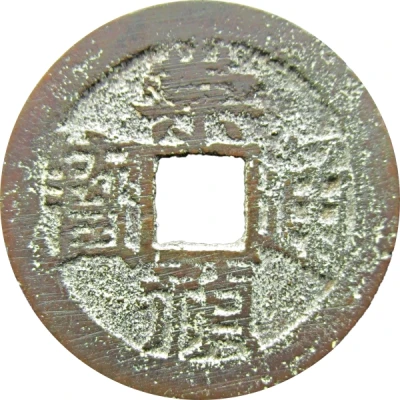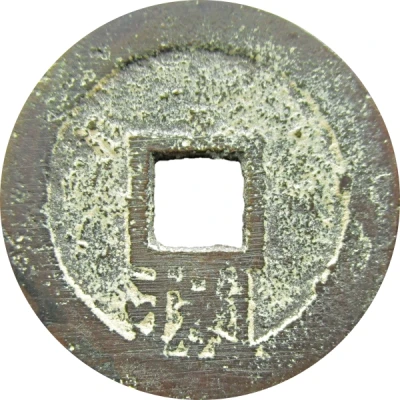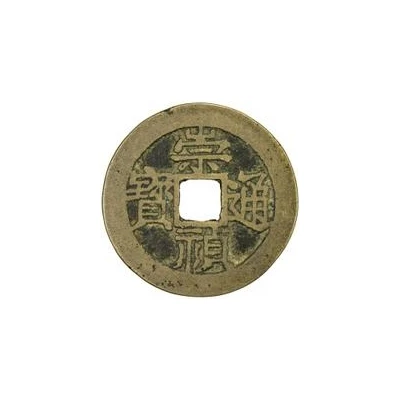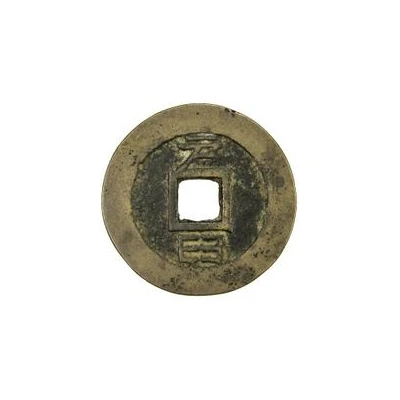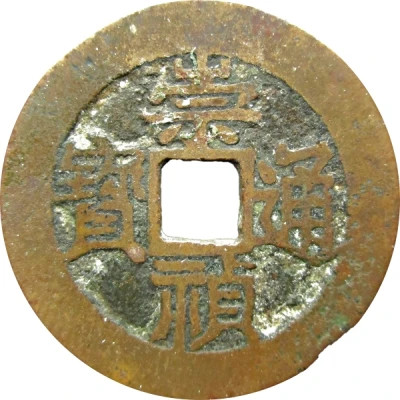
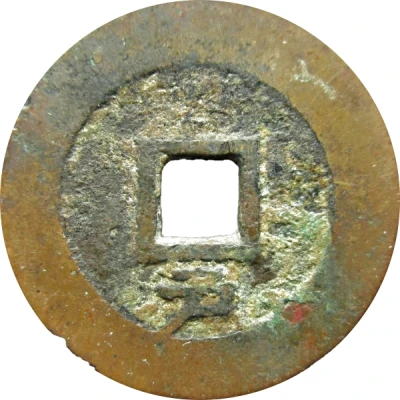

© Ollisaarinen (CC BY)
1 Cash - Chongzhen Tongbao; southern type; Hu ND
| Brass | - | 24 mm |
| Issuer | Empire of China |
|---|---|
| Emperor | Ming dynasty › Chongzhen (崇祯帝) (1627-1644) |
| Type | Standard circulation coin |
| Years | 1630-1644 |
| Value | 1 Cash |
| Currency | Cash (621-1912) |
| Composition | Brass |
| Diameter | 24 mm |
| Shape | Round with a square hole |
| Technique | Cast |
| Orientation | Medal alignment ↑↑ |
| Demonetized | Yes |
| Updated | 2024-10-04 |
| Numista | N#222805 |
|---|---|
| Rarity index | 92% |
Reverse
One Chinese ideogram at various locations.
Script: Chinese (traditional, regular script)
Lettering: 戸
Translation:
Hu
Ministry of Revenue (mint)
Edge
Plain
Comment
Hartill suggests the larger, heavier coins (around 26 millimetres and weighing 1.3 Qian) were the first 1 Cash pieces produced. By 1630, coins minted in the north weighted 1.0 Qian and coins minted in the south weighed 8 Fen or less.The Northern types and the Southern types are differenciated by the left part of Zhen.
- Northern types: 礻
- Southern types: 示
Interesting fact
The Chongzhen Tongbao coin was the first coinage issued by the Ming dynasty, which was founded by Zhu Yuanzhang, a former Buddhist monk who led a peasant rebellion against the ruling Mongol dynasty. The coin was introduced in 1630, and it was made of brass, a metal that was abundant in China at the time. The coin was designed with a square hole in the center, which was a unique feature that distinguished it from other coins of the time. The Chongzhen Tongbao coin was used throughout the Ming dynasty, which lasted from 1368 to 1644, and it remained a popular currency even after the fall of the Ming dynasty.
